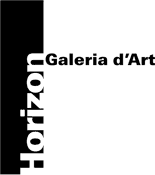Ralph Bernabei
Mark Rothko used to like talking about art as if it was just one more product of nature, as an organism behaving according to its biological laws and subject to evolutionary impulses: growing logically and defined at each step from the exhibition of one set of characteristics to another, always related to what has gone before, and at the same time bringing a promise of the future. In this way, the history of art and, by extension, the very practice of art understood as the sum of products of all artists should be identical to the evolution of these laws. Logically, the role of the individual producer is subject to this organic whole. Rothko, writing at the beginning of the forties, said ‘The work of each artist is a different facet of each stage, the effect is accumulative and functions as an epilogue to the previous stage (...) Therefore, we have the artist carrying out a double function; that of keeping together the process of individual expression in the language of art and that of protecting the organic continuity of art in relation to its own laws. This is because like any organic substance, art has to be fluid and its rhythm can be slow or fast, but always in continual movement.’ Art and the artist identified as an organic whole that has to be alive and moving but, above all, coherent.
Ralph Bernabei finds an unexpected ally in these reflections by the Latvian adopted by New York: from the beginning his painting has been marked by a dialectic process polarized between the existential depths of fields of color and the electric energy of the nervous system; all the painting by this American Italian keeps itself extremely coherently to his own profoundly structured open dialogue but with an evolution of subtle details and especially , the intensity and importance of the intervening voices in the artistic conversation.
One example: if not too long ago his painting was practically a demonstration on how to reduce a palette to a scale of essential grays, now he’s continuing the monochromatic theme but introducing some violent reds that sit at the antipodes of the aseptic black and white. If not too long ago the tendency was recurrent and whirling around itself, now the tendency is towards atectonism, reaching out beyond the four-sided frame to disperse into the beyond, to continue drawing in the air that surrounds the composition.
It’s a question of rhythm: Bernabei does justice to Rothko’s premise and turns each work into an epilogue of previous work carrying a promise of the future. He does it with a spirit of continuation surrounding a deep rhythm similar to the beat of a secret organ essential for the survival of the species. His passion for rhythm is his passion for painting: an attentive eye on the world is translated into works created from wise balance and open reasoning along with time and skill.
Everything we can say about his two dimensional works has an unexpected epilogue in his sculptures. It may be less well-known as Bernabei mainly presents himself as a painter. His sculptures are always a battle to the death against the materials he uses. This could be using found objects or applying a monochrome agglutinate onto the unavoidable imperfections found in wood. Bernabei talks to us from the remote and intimate human need for conservation that has a lot to do with taking care of things. Each sculpture is, in the last resort, a subtle declaration of love.
Eudald Camps, Art Crític
Individual Exhibitions
2009
- Galeria d’Art Horizon. Colera, Girona, Spain
2008
- Gallery Maizuru. Fukuoka, Japan
2007
- Lads Gallery .Osaka, Japan
- Galeria d’Art Horizon. Colera, Girona, Spain
- Tems Gallery. Tokyo, Japan
2005
- Fattahi Fine Art. Stamford CT. U.S.A.
- Gallerie Rasmus. Odense, Danmark
Galeria d’Art Horizon. Colera, Girona, Spain
2000
- Galeria AB. Granollers, Spain
- Fattahi Fine Art. Stamford, CT. U.S.A.
- Galeria de la Riba. Cadaques, Spain
1999
- Galeria Rosa Pous. Girona, Spain
- Gallerie Rasmus. Copenhagen, Danmark
- Galerie Cum Laude. Mol, Belgium
- Lineart Expo Flanders. Gent, Belgium
1998
- Art Expo. Barcelona, Spain
- Galeria d’Art Horizon. Colera, Girona Spain
1997
- Victoria Fine Art. Stamford, CT. U.S.A
1996
- Galeria d’Art Horizon. Colera, Girona Spain
1995
- Noel Fine Art. Bronxville, New York U.S.A.
Group Exhibitions
2009
- “Gala Contemporary Art”. Art Pro Gala, Fukuoka, Japan
2007
- “B&W, A Drawing Show”. Galeria d’Art Horizon, Colera, Spai
2006
- “Vertical 2006”. Marges-U Galeria Cadaques, Spain
- “Arxiu Paisatge:01”. Museu d’Emporda Figueras, Spain
2005
- “To Quiet and Sober the Mind”. Gallerie Rasmus. Odense, Danmark
2004
- Marges-U Galeria. Cadaques, Spain
2002
- “Visions of Black”. Galeria d’Art Horizon. Colera, Spain
2001
- “Conquista del espacio”. Galeria d’Art Horizon. Colera, Spain
- “TEMPVS FVGIT”. Galeria Llucia Homs. Barcelona, Spain
- Gallerie Rasmus Copenhagen, Danmark
2000
- “L’Age d’Or” Luis Buñuel . Galeria d’Art Horizon. Colera, Spain
- Centro Luis Buñuel. Calanda, Spain
- “Ex Libris Walter Benjamin”. Art Contrast. Barcelona, Spain
1999
- “End of the beginning”. Galeria d‘Art Horizon. Colera, Spain
1998
- “Naturalesa, Bellesa arriscada”. Galeria d’Art Horizon. Colera, Spain
- “Ex Libris Walter Benjamin”. Institute Cervantes. Lisboa, Portugal
1997
- Gallerie Rasmus. Kolding, Danmark
1996
- “Centenari de La Boheme”. Galeria d’Art Horizon. Colera, Spain
1995
- “Four painters at the center of things”. Noel Fine Art. New York, U.S.A
Links
Punt Diari — Interview (English)
Assemblage — Interview (English, Spanish, French subtitles )
